- Home
- Paul Christopher
The Lucifer Gospel Page 6
The Lucifer Gospel Read online
Page 6
“With sunglasses like that he’s got to be one of the bad guys,” said Hilts. He popped open the pilot’s door of the Cessna, letting in a blast of dry, hot air that hit him like a fist after the interior air conditioning. He stepped out, dropping down onto the hardstand. Finn opened her own door and followed him out. Achmed and the monk roused themselves and came out through the rear door. One of the men in the khaki shooting jackets waved. Finn recognized him from the Newsweek profile. It was Rolf Adamson, the forty-year-old media tycoon, billionaire, possible religious fanatic, and also her new boss. He looked exactly like his photograph in the magazine: young, blond, Hollywood handsome and New York smart. The man beside him was the direct opposite, old, grizzled, and dark with the face of a worn-out prizefighter.
“The one in the Lion King outfit beside our fearless leader Mr. Adamson is Fritz Kuhn,” said Hilts quietly. “His grandfather was a man named Gustav Kossina, sometimes referred to as Hitler’s archaeologist. Kossina was the freak who came up with all those ’scientific’ theories about Aryan supremacy.”
“What’s he doing here?”
“He’s written a bunch of books about the Italian digs around Al-Kufrah before the war and about Pedrazzi, the guy who disappeared.” He held up two fingers twined together. “Kossina and Pedrazzi were buddies in the old days. Adamson’s hired Kuhn as a consultant.” He glanced at the ferret-faced man in the beret. “Presumably Mr. Gung Ho is our military escort.”
They made their way over to the three men, with Laval bringing up the rear. Achmed started unloading the Cessna. Everyone made their introductions. The man in uniform turned out to be Lieutenant Colonel Amad Nasif, Colonel Qaddafi’s personal guide and “protector” of the expedition. There was no explanation of what the man in the beret would be protecting the expedition from.
“The Guide of the First of September Great Revolution of the Arab Libyan Popular and Socialist Jamahirya is particularly concerned that nothing happen to our new American guests,” said Nasif with a little bow. Finn had never heard Qaddafi’s title in full before, and out of the corner of her eye she could see Hilts trying not to laugh. It was clear that Nasif took the title seriously. His expression looked as though it was carved out of granite.
Adamson clapped his hands together with a grin. “I don’t think we have to worry about that, Colonel. I think we’ve got everything under control.” Adamson had a deep, rich voice and a vaguely Kennedyesque accent, even though he had been born and raised on the West Coast. His smile showed off a set of expensive teeth. Everybody watched as Achmed and two men from Nasif’s helicopter loaded up the Super Puma.
“My people tell me you can fly one of these,” said Adamson to Hilts, nodding at the French chopper.
“I can fly anything,” the pilot answered, smiling and looking pointedly across the hardstand to Nasif’s sinister-looking Mil-24.
“Show me,” said Adamson. “The charts are in the door pocket. I’ll fly the copilot’s seat.”
“You’re rated on this?” Hilts said, surprised.
Adamson smiled. “If it’s got my name on it, I’m rated for it.” The two men stared at each other briefly. Finn felt as though she was in the middle of a pissing contest and it surprised her. She didn’t think Hilts was the type, and Adamson should have been too rich to care.
Boys will be boys, she thought with a sigh. She pulled open the big sliding door, climbed up the single welded step, and ducked into the lavishly appointed passenger cabin of the transport helicopter. A few minutes later, following Nasif in the gunship, they rose heavily off the hardstand and took to the air once more.
11
From the air the site at Deir el-Shakir looked more like a science-fiction moon base than an archaeological dig. Two dozen huge, white nylon high-tech yurts, or domed tents, were scattered across a plateau above a narrow sandstone valley that marked the ancient bed of a long-vanished river. The yurts, each with a forty-foot diameter, were connected by arched nylon tunnels. There were several more lozenge-shaped arch-roof tents that served as living quarters, offices, and even as garages and maintenance sheds for the expedition’s fleet of Range Rovers and Hummer Alphas. The domes and tunnels all had a single purpose: to protect the occupants—man or machine—from the constant winds and the eroding, choking, ever-present dust and sand. The two largest structures, anchored, guy-wired, and lag-bolted into sunken concrete columns, were the two hangars used to house Adamson’s transport chopper and the single-engine Polish PZL “Wilga” that Hilts would be using as his aerial photography platform. With a takeoff requiring only five hundred feet of run-way, the PZL was just about the only aircraft available that could fly in and out of the site. Between the two hangars was a GFI portable helipad to smooth out the rough, pitted area of rock and sand and to keep down flying debris.
Hilts put the big transport down without a quaver, then switched off. As soon as the rotors slowed, four men in white uniforms like cruise ship stewards appeared, and without waiting for the passengers to climb down they rolled the helicopter into the big hangar tent and pulled the Velcro closers on the hangar doors. Like the helipad outside, the floor of the hangar was covered in heavy-duty composite mats to create a stable, clean area. The passenger compartment door slid open and Finn and the others climbed out. Achmed and the men who’d rolled the helicopter inside began unloading.
“Well, Ms. Ryan, what do you think?” Adamson asked, smiling proudly.
Finn wasn’t quite sure what to say, or why she was being singled out by the expedition leader for attention. “Impressive,” she answered.
“Expensive,” added Hilts.
“Very,” Adamson said and nodded. “At last count it was several million dollars.”
“I’m not sure the Copts would approve,” said Hilts. “If I remember right, they took a vow of poverty.”
“True enough,” put in Laval. “On the other hand, most of the hermetic Copts, such as the ones who lived Deir el-Shakir, were fleeing debts.”
“People have always run into the desert in the hopes of disappearing.” Adamson laughed. “That’s what the French Foreign Legion was designed for.” They walked across the hangar and went into one of the connecting tunnels. The steady wind outside whispered against the heavy nylon, rippling the fabric slightly and making a faint slapping sound.
“Almasy,” said Finn. It was just about the only concrete thing she knew about this part of the world.
“I beg your pardon,” said Adamson, stopping to turn and stare at her. The blood seemed to drain from his face. For the first time Finn knew what people meant when they said someone went white as a sheet.
“Almasy,” she repeated. “The Hungarian count from The English Patient.”
“The English Patient was a novel,” snapped Adamson.
“Pretty good movie too,” put in Hilts. “Willem Dafoe was really terrific. Not as good as he was in Spider-Man, but still terrific.”
Adamson glared at him.
“Almasy was based on a real person though, wasn’t he?” insisted Finn, surprised and more than a little curious at Adamson’s reaction.
Laval shook his head. He gave Finn another one of his small, patronizing smiles. A little girl being patted on the head. “Laszlo Almasy wasn’t a count at all. His father was a high-level government official in Budapest. A fonctionaire, as it were, that’s all. The way Germans are all herr doctor or herr professor. He fled to the desert because he’d had an affair with a politician’s wife. He was paid to stay there. He was a dilettante, Ms. Ryan, nothing more.”
“I thought he was a spy during World War Two,” said Hilts flatly. “He used what he knew about the desert to bring a spy across from Morocco all the way to Cairo, right?”
“There are many stories about Laszlo Almasy,” said Laval with a faint smile, “and most of them are just that, stories.”
“And none of them have anything at all to do with Coptic monasteries in general or Deir el-Shakir in particular,” said Adamson. He made an imperious lit
tle motion with his hand. “Come along.”
They followed Adamson along the gently curving passageway, finally exiting into a large living area complete with tables, chairs, a portable kitchen with a refrigerator, and both a Ping-Pong and a billiard table. There were several people in the large, domed room, some reading or talking together. An Asian man and a black woman were playing a spirited game of Ping-Pong. Everyone was dressed casually. The atmosphere in the dome was cool, and Finn suddenly realized that it was air conditioned. Light came in through half a dozen translucent triangles set into the walls. Somewhere nearby she could hear the faint hum of a generator.
Adamson guided them to one of the tables and they sat down. A few moments later another uniformed steward appeared with a tray loaded down with a jug of iced tea, sprigs of mint, and glasses that looked as though they’d been stored in a freezer. The steward was dark-haired and olive-skinned. His name tag read “Badir.” A local like the ones in the helicopter hangar. The steward withdrew silently. Playing the host, Adamson poured iced tea for everyone and sat back in his chair.
“There are ninety-two people on site at Deir el-Shakir,” he said. “Of those, twenty-five are actually on the archaeological staff, fifteen are interning graduate students from universities around the world, twenty more are volunteers who pay for the privilege of being here, and the rest are support staff. This is one of the most sophisticated and expensive archaeological sites on the planet. In addition to the services of Mr. Hilts, we have a complete remote-sensing department, which includes hookups to SPOT, French Satellite Pour l’Observation de la Terre archives, NASA Landsat, and ASTER. We also have full side-scanning radar facilities, computer imaging, and real-time access to some of the world’s most comprehensive archaeological archives. In short, if you want information, we can get it for you.”
“Good to know,” said Hilts, looking around at the dome.
“You will be running a number of low-altitude surveys using both film and digital cameras. We have the plots and charts any time you’d like to see them,” offered Adamson.
“Satellites don’t give you enough?”
“A great deal of data, but not much detail. We’re particularly interested in the location of old caravan trails and the wells that were used by pilgrims coming to the monastery.”
“Seems straightforward.”
“Hopefully.” Adamson turned to Finn. “You, Ms. Ryan, will be spending most of your time doing in situ drawings of artifacts before their removal, then placing those locations on the overall site grid. I understand from your résumé that you have some experience with computers.”
“Some.”
“PitCalc? Altview?”
“Yes.” PitCalc was one of the earliest pieces of archaeology software written and one that she’d learned on her mother’s computer in the field when she was a teenager. Altview was the same kind of wire-diagram program draftsmen used. It was one of those times when she was glad she hadn’t fluffed her résumé like a lot of her friends, some to the point of adding entire degrees or past job descriptions.
“Good,” said Adamson. He drained his iced tea and stood. “Achmed will have taken your luggage to your quarters. As staff members you both have private quarters in the residential quadrant.” A white-coated steward silently appeared at the table. Adamson laid a paternal hand on the young man’s shoulder. “Farag will show you the way.” Finn was surprised that Adamson knew who the steward was until she noticed the plastic name tag pinned to his jacket. “Until dinner this evening,” Adamson said and smiled. Then he turned on his heel and left. They watched him go.
“I wonder what Deir el-Shakir means,” said Finn, taking a sip of her iced tea.
“Monastery of the Skull,” supplied Hilts. “The skull in question was supposed to have belonged to St. Thomas the Apostle. That’s what the Copts meditated on here. There’s also a theory that the skull was made of crystal, like that Mayan one, except the skull here was supposedly that of Baphomet . . . the Knights Templar version of Satan. Spooky if you’re a fan of that kind of thing.”
Finn laughed. “You’ve been watching X-Files reruns, haven’t you?”
“If you’ll follow me, please,” murmured Farag, their steward.
And they did.
12
True to Adamson’s word, Finn’s luggage had been delivered to her quarters in the residence quadrant, a long domed yurt like the others but with individual rooms jutting out from the main tent like the legs of a centipede. By her count there were twenty-five of these cells, each one equipped with electricity, a gravity-fed water tank, and a small chemical toilet cubicle. The quarters also had a smaller version of the triangular windows in the recreational area. She had a camp bed with an inflatable mattress and matching pillow, a tubular steel and plastic desk, a lamp, a Local Area Network Internet connection for a laptop, and a chair. She even had her very own air-conditioning duct. For communications there was a headset Motorola ten-channel walkie-talkie outfit with a five-mile range and a buzzer system for calling a steward if necessary. Everything she needed to know about the site from a plan of the “moon base” to instructions for flushing the chemical toilet was contained in a loose-leaf binder lying on her bed. Adamson had clearly spared no expense, and Finn found herself wondering what he was hoping to get for all his money. It seemed like overkill for a few Coptic inscriptions, since according to Hilts the monastery was far from a newly discovered site.
The evening meal was held in the dining hall, a large yurt like the recreation area with two dozen tables, including a large one for the actual staff in an area separated from the rest of the tables by a high, white nylon barrier. Finn found herself seated between a ceramic expert from the Royal Ontario Museum named Adrian March and Hilts. Adamson sat at the head of the table beside a small dark man he introduced as Mustapha Hisnawi, their liaison with the Libyan Office of Antiquities. Directly across from her was Fritz Kuhn, the heavyset man Hilts had said was the grandson of Hitler’s archaeologist. Beside him was Laval, the monk from l’Ecole Biblique in Jerusalem. The meal was a variety of Libyan dishes, lamb, chicken, and vegetarian. The conversation was mostly about the dig and mostly technical. Finn waited for an opportune moment and finally managed to ask her question.
“Is there any real focus to the dig?” she said. Across from her the German, Kuhn, frowned. Adamson just shrugged.
“Does there have to be a focus?”
“Usually for a project like this you’d expect some sort of ultimate goal.”
“What would you know about projects like this,” Kuhn snorted, digging around at the sauce-covered lamb and rice on his plate. His face was flushed. He picked up his wineglass and drained it. A steward appeared at his back and refilled it from a cloth-swathed bottle. Finn ignored Kuhn’s rudeness and waited for Adamson’s answer.
“Archaeology is a science of small increments, Ms. Ryan. The man seated beside you, young Dr. March, will spend several years collecting enough pieces from a shattered pot to make a reconstruction, and even then it will probably not be complete. But completeness is not the goal, is it, Adrian?”
“Dear me, no,” said the slim, fair-haired man with the thick glasses who sat on her left. “One looks for trends, points of comparison. Complete reconstructions aren’t necessary to know what one is dealing with.”
“There you are, Ms. Ryan. Our overall goal here at Deir el-Shakir is simply to add to the sum total of what we already know. This is not Howard Carter uncovering King Tut’s tomb, or a French captain of engineers discovering the Rosetta Stone as he prepared to blow up a bridge. Nothing that would be worthy of the CBS Evening News, believe me, not even Larry King.” He laughed. “This is simply the basic gathering of knowledge so that we have a better picture about the past.”
“Trudging in the fields of academe, tilling the soil of history, that kind of thing?” Hilts quipped. He picked up a chicken bone on his plate and sucked off a remaining piece of meat. He dropped the bone back on the plate, then wipe
d his hands on a napkin.
“Something like that, Virgil,” Adamson said with a nod.
“Just Hilts, if you don’t mind. Just Hilts.”
“As I understand it, Deir el-Shakir was originally founded by St. Thomas the Apostle,” said Finn, remembering what Hilts had told her.
“A myth,” Laval answered from the opposite side of the table. “Historically St. Thomas is presumed to have gone in the opposite direction, to India. Deir el-Shakir was born out of what is usually referred to as the Arian heresy, Arius being a well-known monk from Libya. He preached that Christ was not divine, but mortal, and merely a prophet; it is probably this doubt about Christ being the true Son of God that suggested the link to Thomas, a man given to the same sort of thinking, ergo the nickname ‘Doubting Thomas.’ The monks here were followers of Arius, but I’m afraid St. Thomas was not among them.”

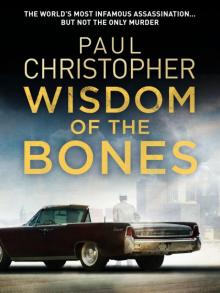 Wisdom of the Bones
Wisdom of the Bones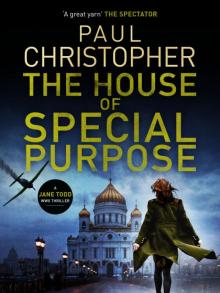 The House of Special Purpose
The House of Special Purpose The Second Assassin
The Second Assassin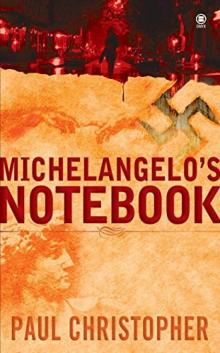 Michelangelo's Notebook
Michelangelo's Notebook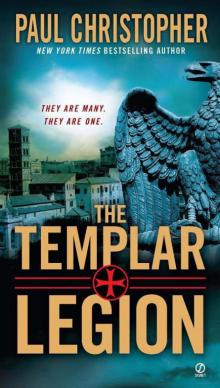 Templar Legion
Templar Legion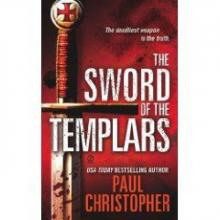 The Sword of the Templars t-1
The Sword of the Templars t-1 Red Templar
Red Templar The Aztec Heresy
The Aztec Heresy The Templar Legion
The Templar Legion Rembrandt's Ghost
Rembrandt's Ghost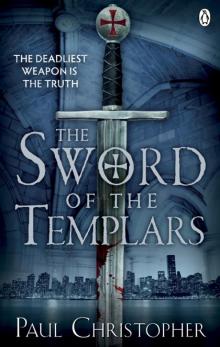 Sword of the Templars
Sword of the Templars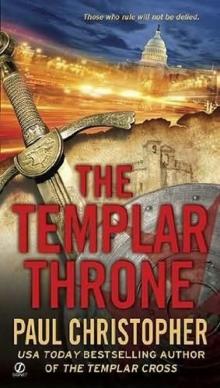 The Templar throne t-3
The Templar throne t-3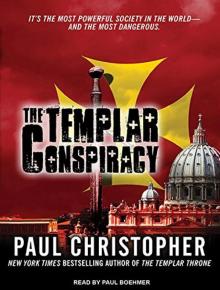 The Templar Conspiracy
The Templar Conspiracy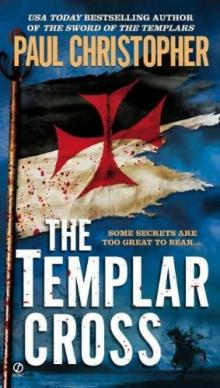 The Templar Cross t-2
The Templar Cross t-2 The Templar Legion t-5
The Templar Legion t-5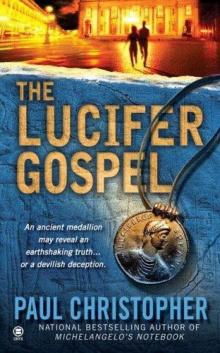 The Lucifer Gospel
The Lucifer Gospel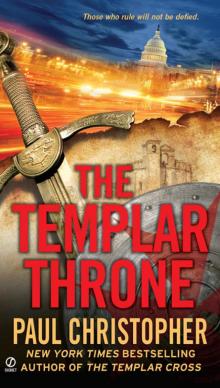 Templar Throne
Templar Throne Michelangelo_s Notebook fr-1
Michelangelo_s Notebook fr-1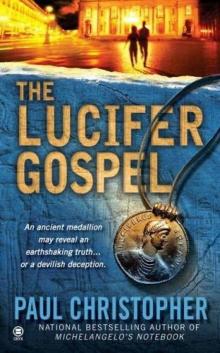 The Lucifer Gospel fr-2
The Lucifer Gospel fr-2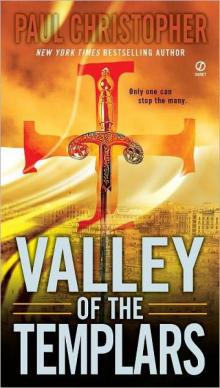 Valley of the Templars ts-7
Valley of the Templars ts-7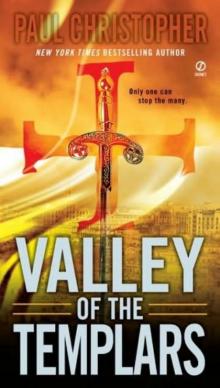 Valley of the Templars
Valley of the Templars Templar Cross
Templar Cross The Templar Throne
The Templar Throne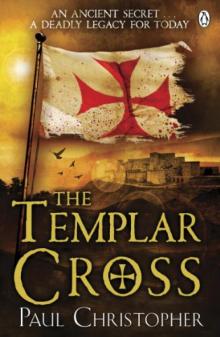 The Templar Cross
The Templar Cross Lost City of the Templars
Lost City of the Templars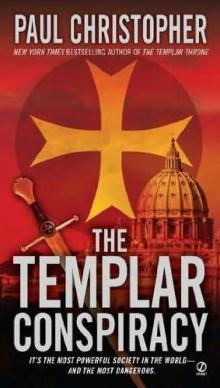 The Templar conspiracy t-4
The Templar conspiracy t-4 Templar Conspiracy
Templar Conspiracy